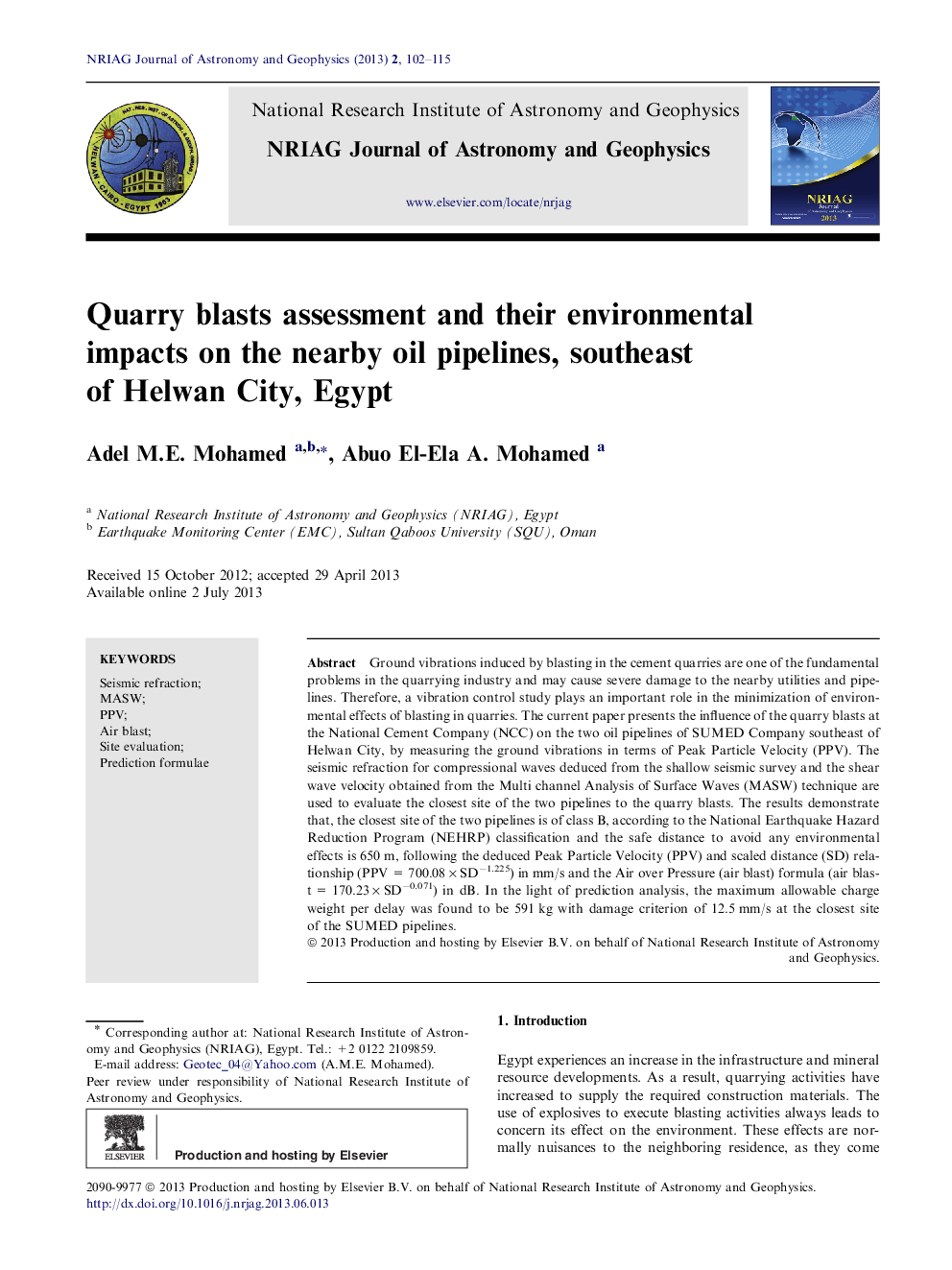| Article ID | Journal | Published Year | Pages | File Type |
|---|---|---|---|---|
| 1780650 | NRIAG Journal of Astronomy and Geophysics | 2013 | 14 Pages |
Ground vibrations induced by blasting in the cement quarries are one of the fundamental problems in the quarrying industry and may cause severe damage to the nearby utilities and pipelines. Therefore, a vibration control study plays an important role in the minimization of environmental effects of blasting in quarries. The current paper presents the influence of the quarry blasts at the National Cement Company (NCC) on the two oil pipelines of SUMED Company southeast of Helwan City, by measuring the ground vibrations in terms of Peak Particle Velocity (PPV). The seismic refraction for compressional waves deduced from the shallow seismic survey and the shear wave velocity obtained from the Multi channel Analysis of Surface Waves (MASW) technique are used to evaluate the closest site of the two pipelines to the quarry blasts. The results demonstrate that, the closest site of the two pipelines is of class B, according to the National Earthquake Hazard Reduction Program (NEHRP) classification and the safe distance to avoid any environmental effects is 650 m, following the deduced Peak Particle Velocity (PPV) and scaled distance (SD) relationship (PPV = 700.08 × SD−1.225) in mm/s and the Air over Pressure (air blast) formula (air blast = 170.23 × SD−0.071) in dB. In the light of prediction analysis, the maximum allowable charge weight per delay was found to be 591 kg with damage criterion of 12.5 mm/s at the closest site of the SUMED pipelines.
